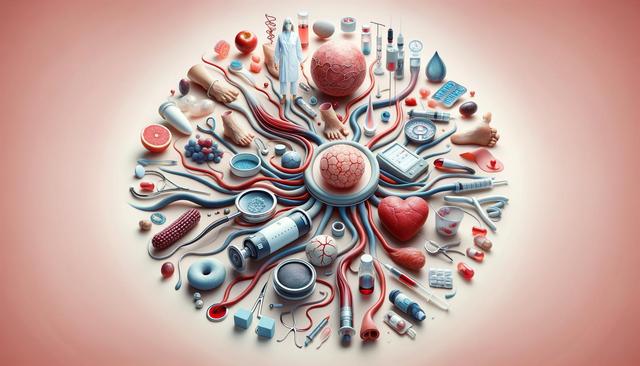What Causes Spider Veins and Who Gets Them?
Spider veins are small, dilated blood vessels that appear close to the surface of the skin, often forming web-like or linear patterns. These veins can develop for a variety of reasons, and understanding what causes spider veins and who gets them can help in both prevention and treatment. The most common contributing factor is heredity; if your family has a history of vein problems, your chances of developing spider veins increase significantly. Hormonal changes, pregnancy, prolonged standing or sitting, and even exposure to the sun can also play a role in their development.
People who are more prone to spider veins include:
- Women, particularly due to hormonal fluctuations from pregnancy, menopause, or birth control use.
- Individuals over the age of 50, as veins weaken with age.
- Those with occupations that require long hours of standing, such as nurses and teachers.
- People who are overweight, placing additional pressure on the veins.
While lifestyle and genetics contribute to their appearance, spider veins are not always preventable. However, being aware of risk factors can help you take steps to minimize their development.
Are Spider Veins Dangerous or Just Cosmetic?
One of the most common questions is: “Are spider veins dangerous or just cosmetic?” For many, spider veins are primarily a cosmetic concern, causing embarrassment or self-consciousness, particularly when they appear on the legs or face. However, in some cases, they can be an early sign of venous insufficiency or other underlying circulatory issues. Symptoms such as aching, burning, or swelling in the legs may indicate that spider veins are more than just surface-level.
It’s important to monitor any changes and consult a healthcare provider if you notice:
- Pain or discomfort in the area of the spider veins
- Swelling, heaviness, or cramping in the legs
- Skin discoloration or ulcers near the veins
While spider veins themselves rarely lead to serious health problems, they can sometimes accompany larger varicose veins, which may require medical attention. A professional evaluation can help determine whether your condition is purely cosmetic or indicative of a deeper issue.
How Can You Treat or Remove Spider Veins?
Once spider veins appear, many people seek ways to reduce or eliminate them. The question “How can you treat or remove spider veins?” has several answers depending on the severity and location of the veins. Treatments range from conservative home care to more advanced outpatient procedures.
Common treatment options include:
- Sclerotherapy: A minimally invasive procedure where a solution is injected into the vein, causing it to collapse and fade over time.
- Laser therapy: Uses focused light to target and destroy the vein without damaging surrounding tissue.
- Radiofrequency ablation: Employs heat to close affected veins, often used for larger varicose veins but can be adapted for spider veins.
- Compression stockings: Help improve circulation and reduce the appearance of veins, especially when used early.
Each treatment method has pros and cons, and the right choice depends on individual circumstances and medical evaluation. Most options are non-surgical and require little to no downtime, making them accessible to many patients.
Can You Prevent Spider Veins from Developing?
While not all spider veins are preventable, certain lifestyle changes and habits can reduce your risk. Prevention is especially important for individuals who already have risk factors. Making small changes in daily routines can go a long way in maintaining vein health and potentially delaying the onset of spider veins.
Preventive strategies include:
- Regular exercise to improve circulation
- Avoiding long periods of sitting or standing
- Wearing compression garments if you’re at higher risk
- Elevating your legs periodically throughout the day
- Maintaining a healthy weight
Additionally, protecting your skin from excessive sun exposure, especially on your face, can help prevent facial spider veins. Staying hydrated and avoiding tight clothing that restricts blood flow are also smart preventive measures.
Even if you already have spider veins, these steps can help prevent new ones from forming and support overall vascular health.
Long-Term Management and When to See a Specialist
Managing spider veins is often an ongoing process, particularly for those with a strong genetic predisposition or lifestyle factors that contribute to their development. Periodic treatments may be needed if new veins appear over time, and maintaining healthy habits remains essential. If conservative methods do not relieve symptoms or if the veins are accompanied by discomfort, it may be time to consult a vein specialist.
Consider seeing a specialist if you experience:
- Persistent pain or swelling
- Visible bulging veins along with spider veins
- Skin changes like discoloration or ulcers
- Recurring symptoms despite lifestyle changes
A vascular specialist can perform diagnostic tests like ultrasound to assess vein function and recommend personalized treatment plans. Early intervention is key in preventing potential complications and achieving the best possible outcomes.
Knowing what causes spider veins and who gets them is the first step toward effective management. With today’s medical advancements and lifestyle strategies, you have a variety of tools to address both the cosmetic and medical aspects of this common condition.
Conclusion: Taking Control of Your Vein Health
Spider veins are a common concern that can affect anyone, but understanding their causes, risks, and treatments allows you to take proactive steps. Whether you’re looking to improve appearance or address discomfort, a combination of preventive care and professional treatment can make a meaningful difference. If you’re wondering, “Are spider veins dangerous or just cosmetic?” it’s worth consulting a healthcare provider to determine the right course of action. By staying informed about how you can treat or remove spider veins and recognizing what causes spider veins and who gets them, you’re better equipped to manage and support your long-term vein health.




Leave a Reply